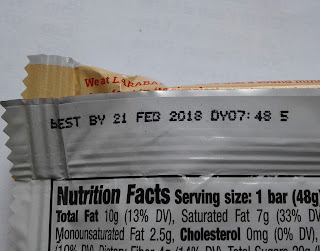Deciphering Date Labels
Confusion over food product dating results in the waste of wholesome foods. According to the USDA, 30 percent of food waste occurs at the consumer level1.
Did you know, federal regulation does not require food product dating (exception - infant formula). Because of this there is no universally established narrative only commonly used phrases, such as2
- “Best if Used By/Before” - Not a purchase or safety date. It refers to the products best flavor or quality.
- “Sell-By” – Not a safety date – lets stores know how long to display the product for sale
- “Use-By” – Not a safety date (exception – when used on infant formula) – last date of peak quality
After the date on the label has passed, the quality of the product may deteriorate; however, if handled properly it should still be safe for consumption3. Before consuming a food product after the date on the label, check for signs of spoilage. Spoiled foods will have a bad odor, flavor or texture. Don’t eat foods that have those characteristics. Note: Color change in meat does not indicate spoilage4.
Can Codes – what do they mean?
Can codes are a sequence of letters and numbers that tell when the food was canned. Can codes are not a “Best if Used By/ Before” date. Often cans will have a calendar date that refers to the “Best if Used By/ Before” date, which refers to peak quality.
A general rule: tomatoes, fruits and other high-acid foods have the best quality for up to 18 months & vegetables and meat are good for up to five years5. Note: Dented, rusted, or swollen can should be discarded and not consumed.
Donate expired foods?
According to the USDA, it’s perfectly okay to donate foods passed the date on the label6. Before you do, make sure there is no sign of spoilage.
The Take-Away
Now that you have a better understanding of food product dating and you can avoid wasting wholesome foods. Less waste = healthier environment
1,2,3,4,5,6 United States Department of Agriculture. 2016. Food Product Dating. https://www.fsis.usda.gov/




Comments
Post a Comment